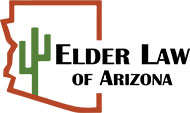
In order to be eligible for ALTCS benefits the applicant may have no more than $2,000 in “countable” assets (the figure may be somewhat higher in some states). Medicaid law also provides special protections for the spouses of Medicaid applicants to make sure they have the minimum support needed to continue living in the community while their spouse is receiving long-term care benefits.
What is the ALTCS Community Spouse Resource Assessment?
In general, the community spouse may keep one-half of the couple’s total “countable” assets up to a maximum of $137,400 (in 2022). This is the community spouse resource assessment (CSRA), the most that a state may allow a community spouse to retain without a hearing or a court order. The least that a state may allow a community spouse to retain is $27,480 (in 2022).
How Does ALTCS Calculate the CSRA?

The snapshot date is usually the date of “institutionalization,” the day on which the ALTCS applicant enters either a hospital or a long-term care facility in which he or she then stays for at least 30 consecutive days. States use as the snapshot date either the first day of the month the applicant entered the facility or the actual date of entry. If the applicant enters a hospital or nursing home, stays for 30 days, goes home, and then reenters a hospital or nursing home, the snapshot date is the date the applicant entered the hospital or nursing home for the first stay.
Not all ALTCS long-term care applicants are in an institution. The snapshot date is usually either the date of the application or the date the applicant is determined to need a nursing home level of care.
On the snapshot date, the ALTCS agency counts up all of an applicant’s and his or her spouse’s assets, excluding the couple’s house. Then depending on the state’s CSRA, the agency determines how much the community spouse can keep. If any assets above $2,000 remain, then that money must be spent down before the applicant will qualify for benefits.

How Can We Help?
Proper planning can help a couple determine when the best time to apply for ALTCS benefits based on the snapshot date and maximize the assets the couple can keep. Consult with our experienced attorneys for advice specific to your situation.





